
Latkes with Dungeness Crab

 8 portions
8 portions 30m
30mThe richness of fresh picked crab on a crispy vehicle of miniaturized hash browns, cut with a spark of greek yogurt.
What you will need
1 Whole Dungeness Crab
1 Russet Potato
1 Shallot
1 medium Tomato
1 bunch Chives
Salt
Black Pepper
1/2 cup Greek Yogurt
(Nutritional facts 101 calories, 0.18 g fat, 22.05 g carbohydrates, 5.07 g protein, 0 mg cholesterol, 902 mg sodium)How to cook
1

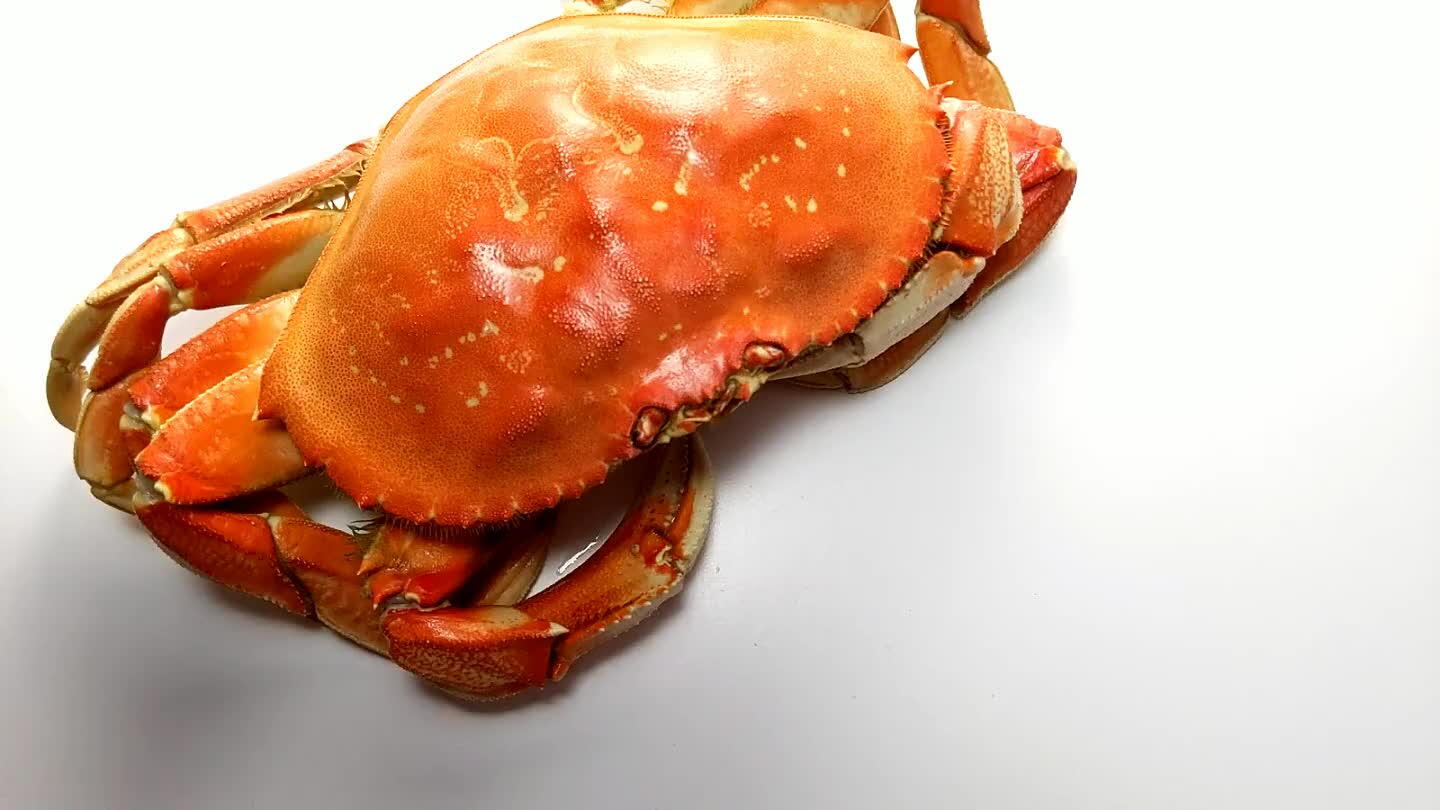
2

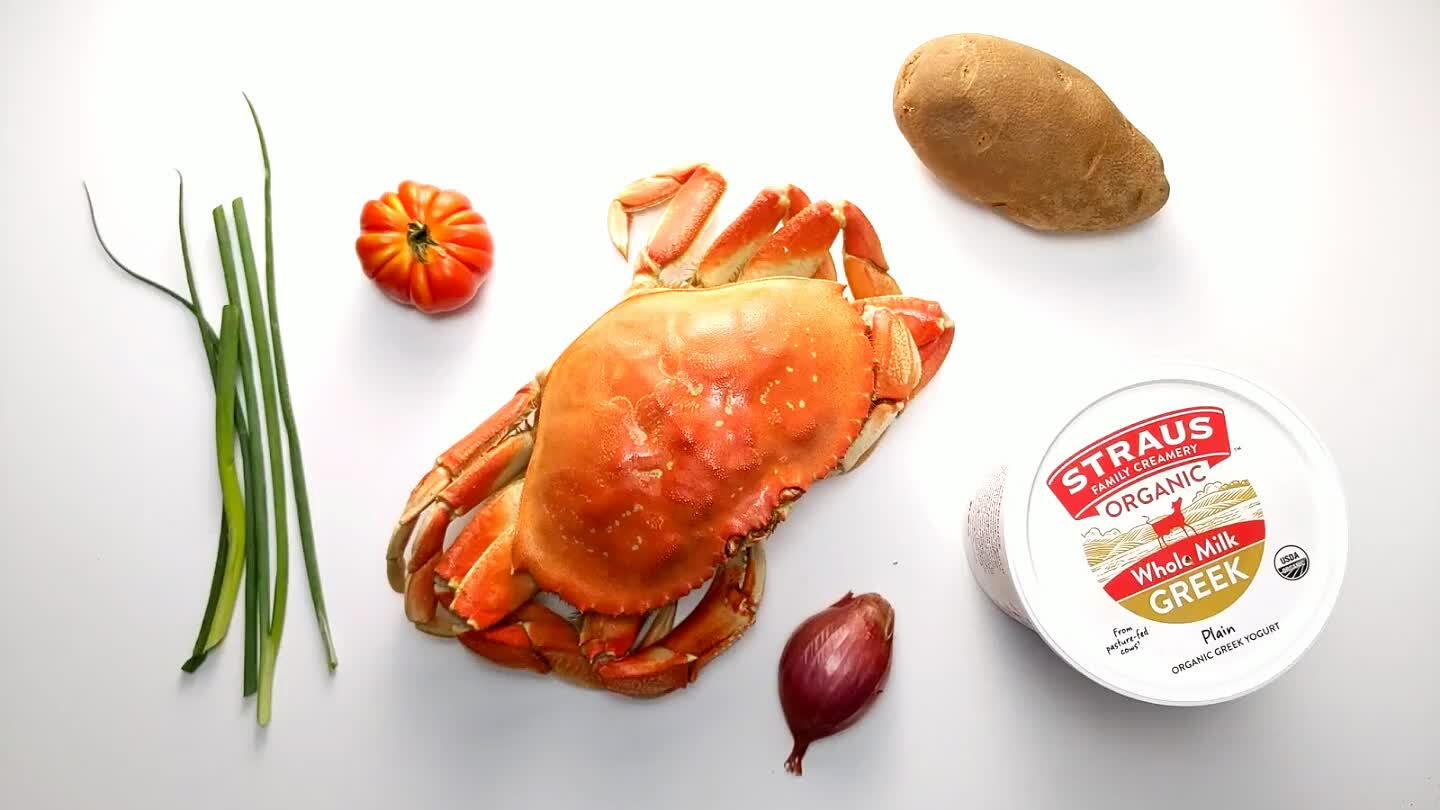
3


4

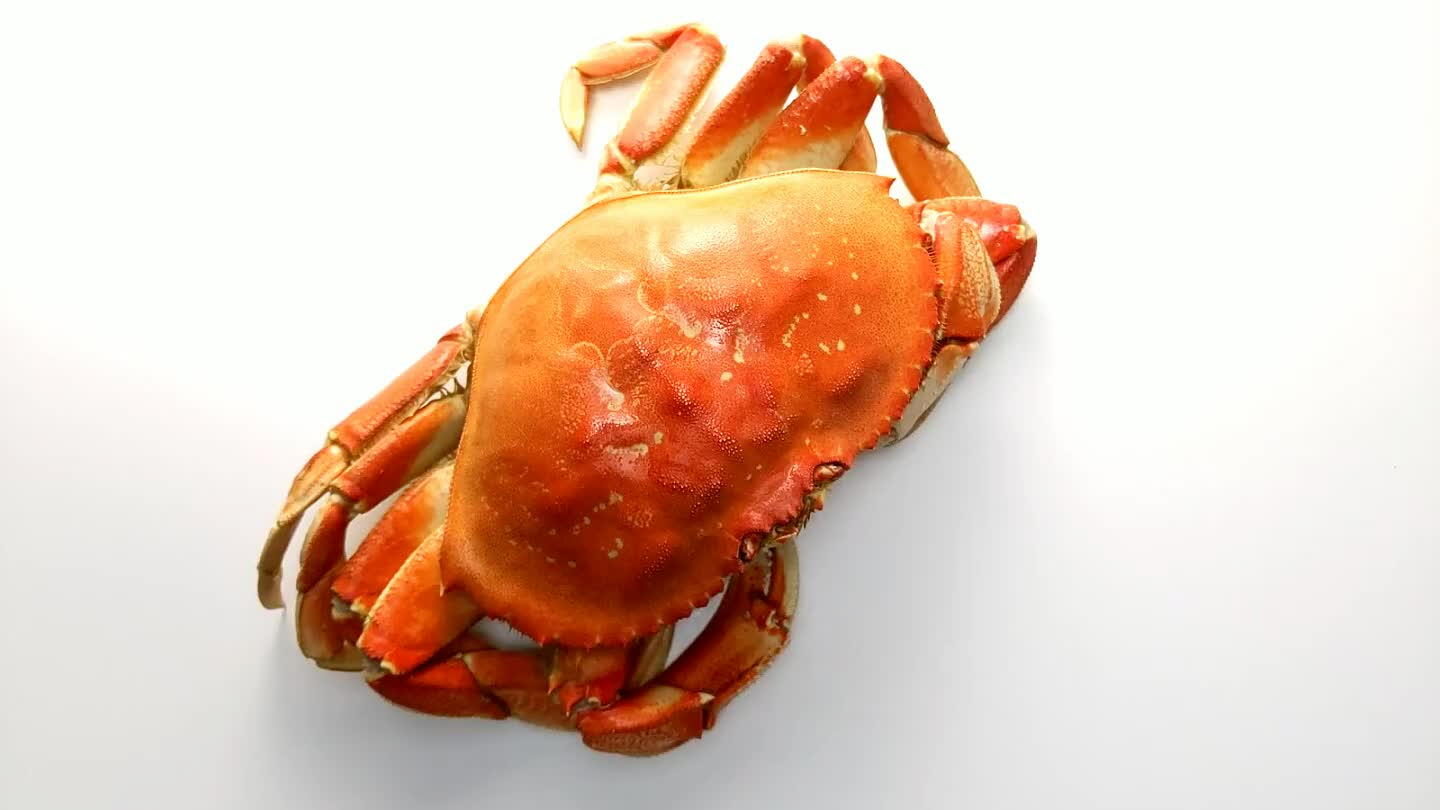
If you know how to clean a crab, feel free to skip ahead. But even if you're a crab-picking pro, you might find some helpful pointers here.
5

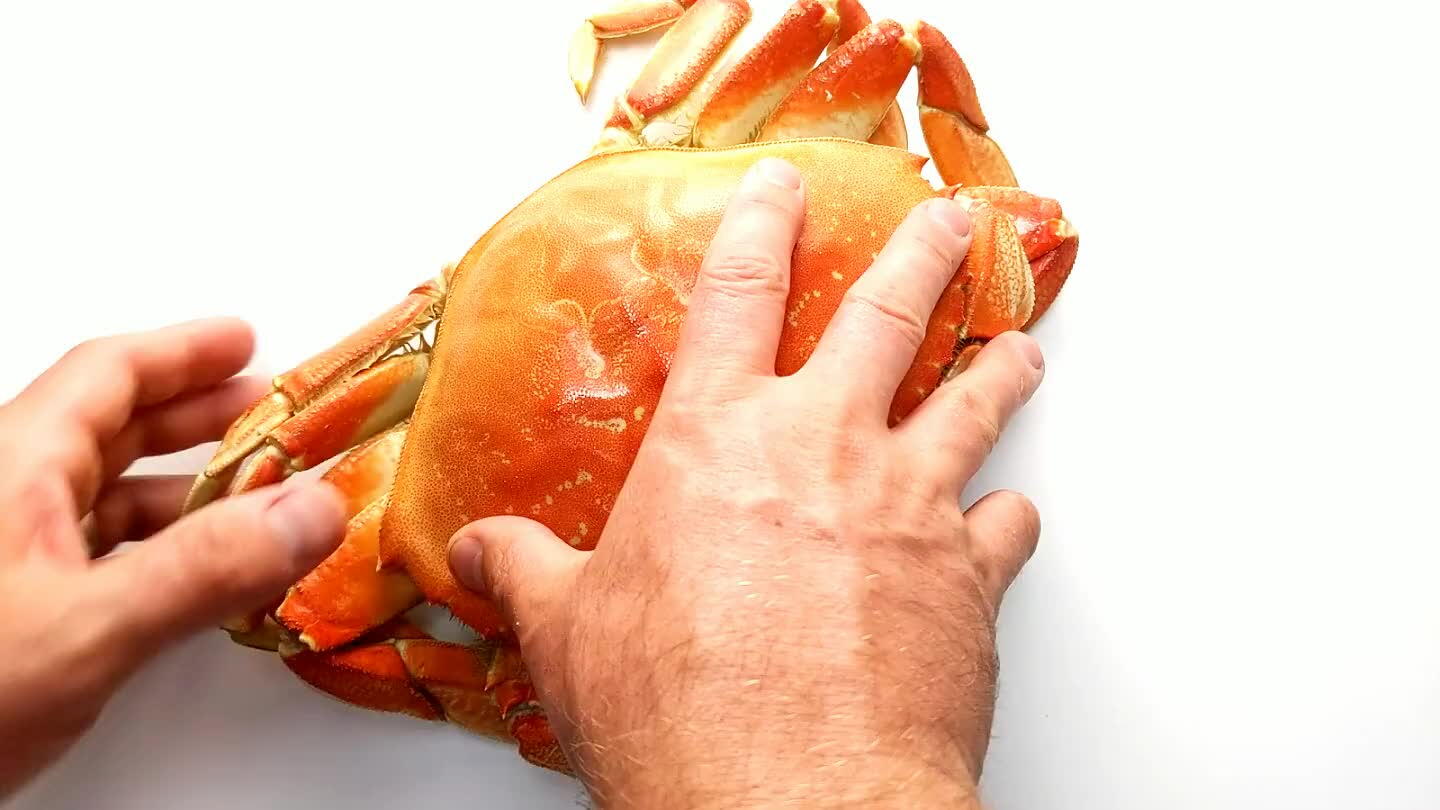
The carapace is the upper shell. Flip the crab belly-up. There is a flap running down the center of the belly. Get your nails in there and pull up the flap. Grasping the legs, press with your opposite thumb on the edge of the top shell at the base of the tail. The body should come away from the top shell. Fair warning, it's kinda gross in there.
6


Remove and discard the feathery cones that run along the outside (a.k.a. the 'lungs' or 'gills'). They taste gross. On the other hand, the yellow liquid (aka 'tomalley' or 'crab butter') that pools in the shell is delicious, but it tends to concentrate water impurities. If you're confident your crabs were taken from deep, open water, you can add that broth to a stock or just eat it with a chunk of crusty sourdough. Otherwise discard it with the rest.
7

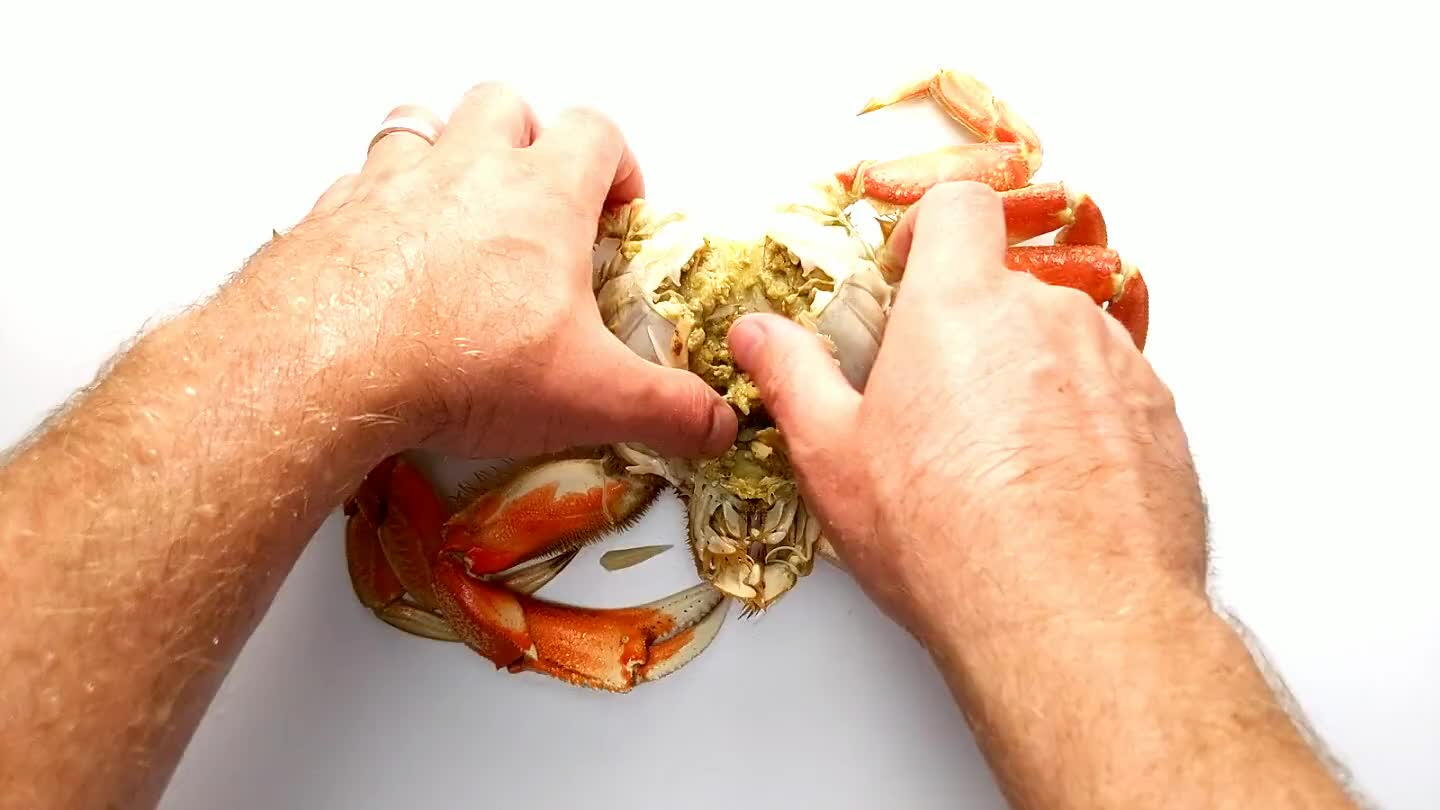
The remaining body can be easily cracked down the middle and separated into two halves.
8

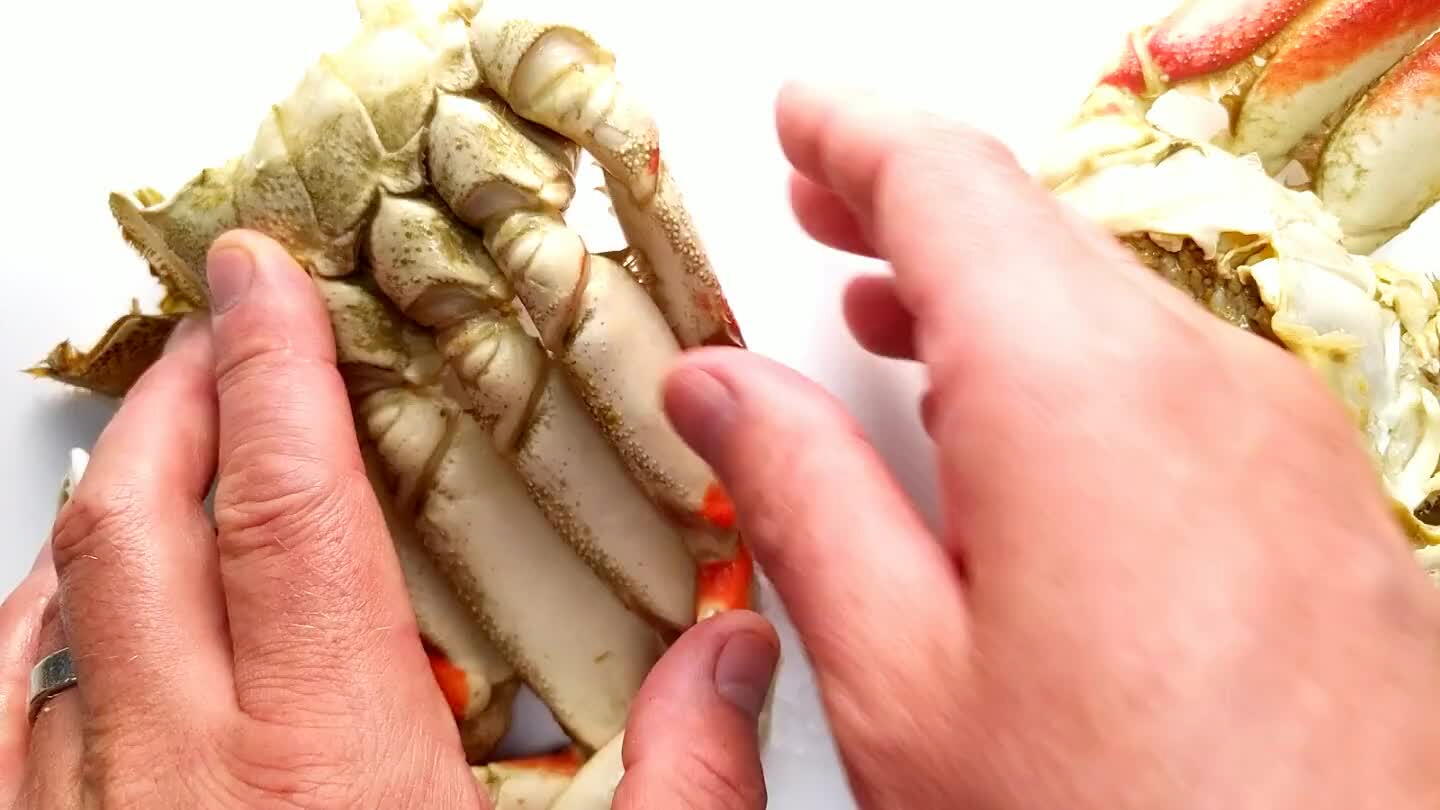
Gently twist each leg from it's joint. If you twist the arm correctly, you can remove it at the innermost joint, making it easier to get to the body meat.
9

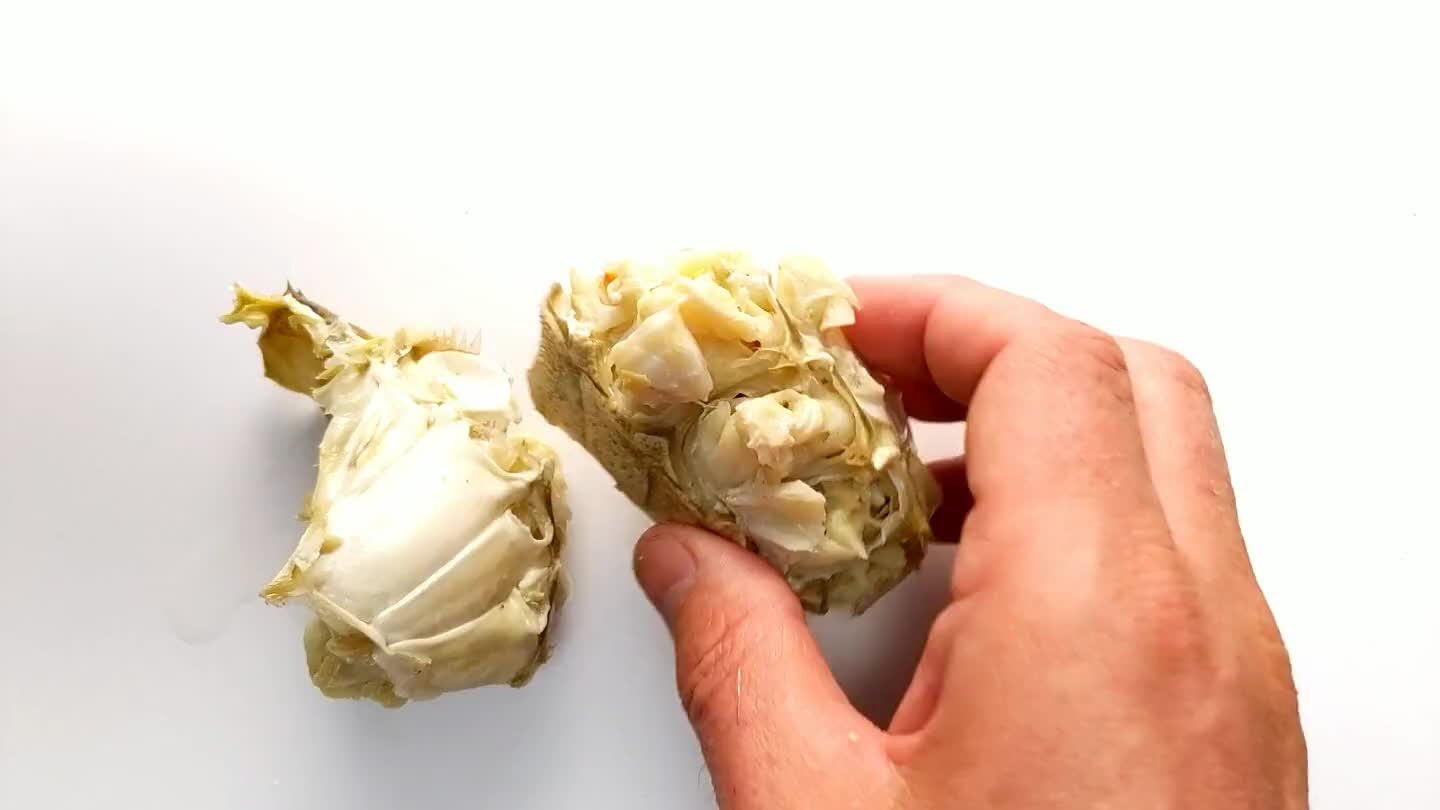
Take the two legless body halves and crack the top shell away from the bottom shell. This should give you easy access to the channels of body meat that run along the body. Do your best to stay aware of the shell pieces here. If you're careful, and minimize the number of breaks you make to the shell, you can easily avoid losing pieces of the shell into the lump meat.
10

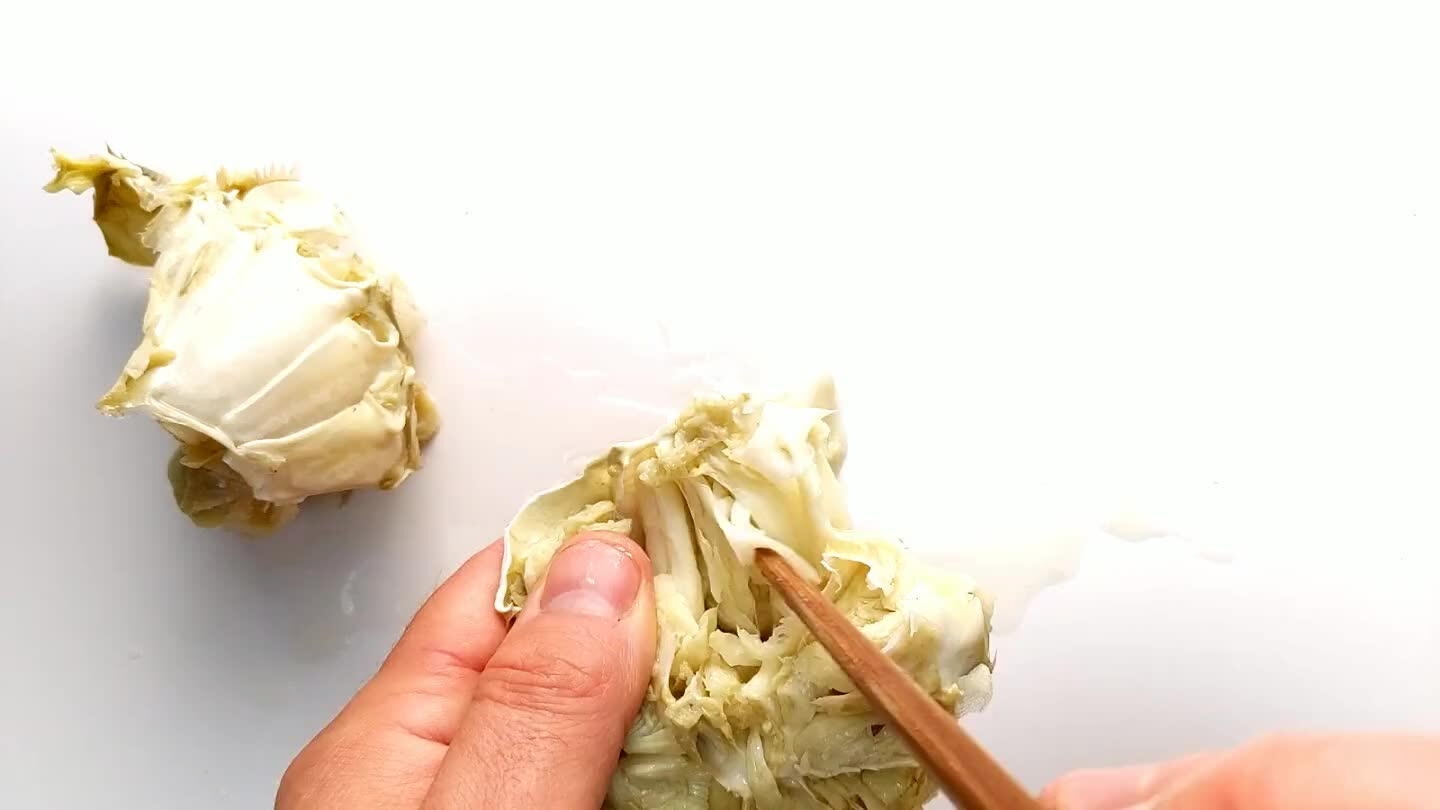
Clear the body meat from the channels with a chopstick or a crab pick. Try not to make any more breaks to the shell if you can avoid it. Every time you crack the shell, you increase the likelihood that a piece will be lost, only to be found later by someone's poor teeth.
11

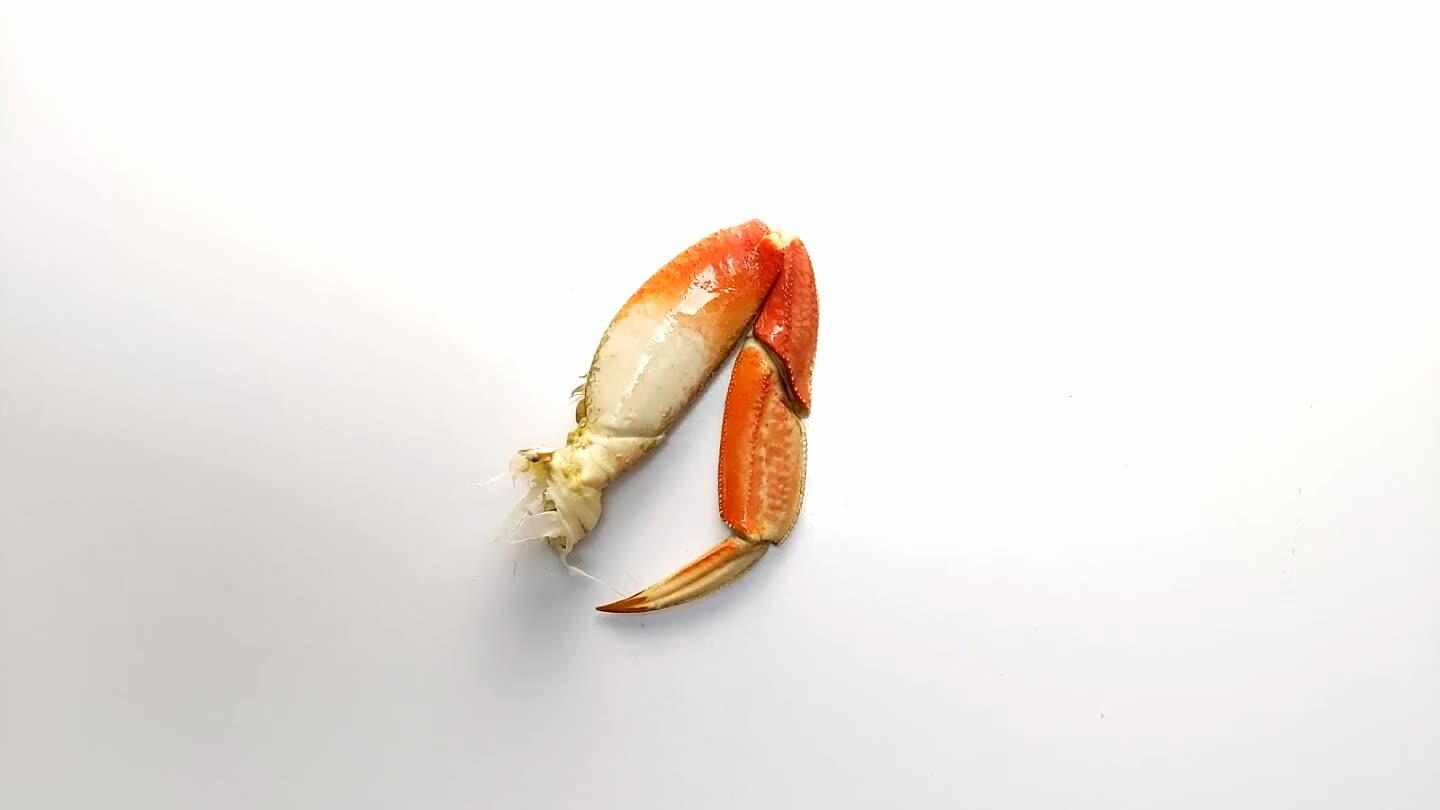
Each leg can be easily pulled apart into 5 segments. Pop out the knuckle, then remove the shoulder joint from the upper arm and the pointer from the forearm. The pointer can be discarded. Staying organized here helps to make this a cleaner and more efficient job.
12

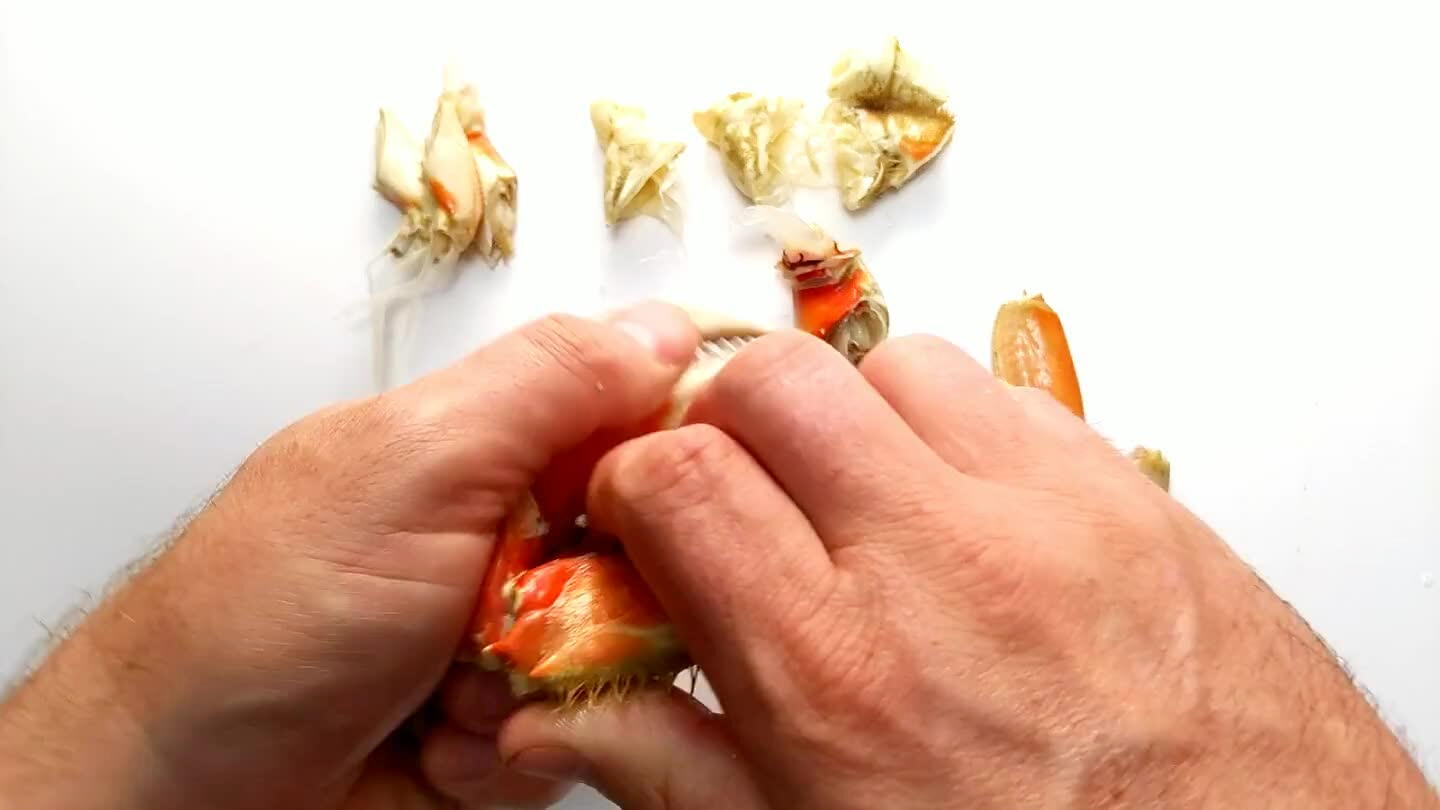
On the arms, the claw pincers can also be separated. The smaller, top pincer can be discarded.
13

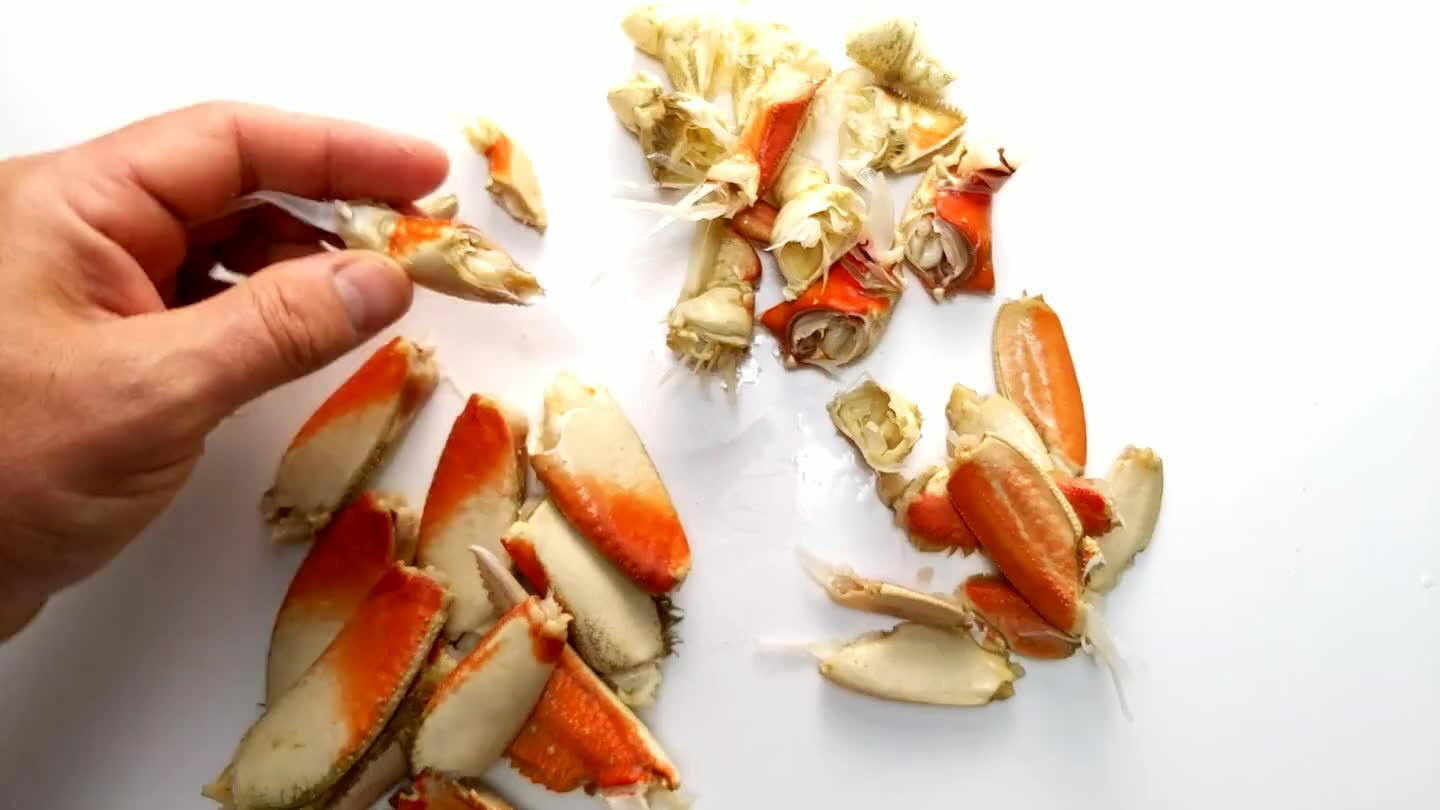
With a toothpick or a chopstick, pop out the meat from the knuckle. This is a detail that is often skipped. This small piece of meat seems hardly worth the effort. But this is the sweetest piece of meat on the crab. Don't let it go to waste.
14

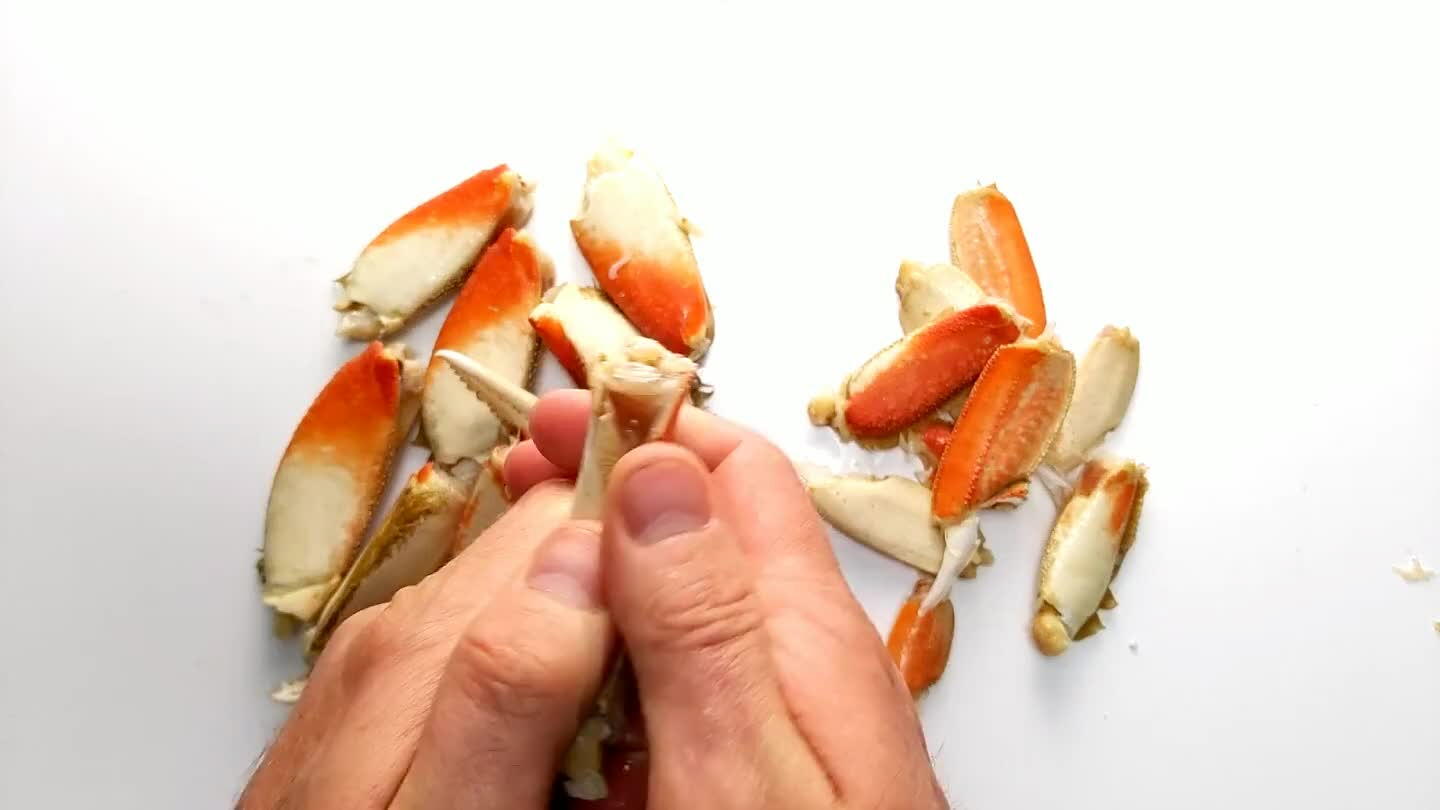
The larger arm sections should be cracked gently, ideally by hand. Remove meat in full, contiguous chunks whenever possible. If you need to use an implement to crack the arms, just crack once and pick away the pieces.
15

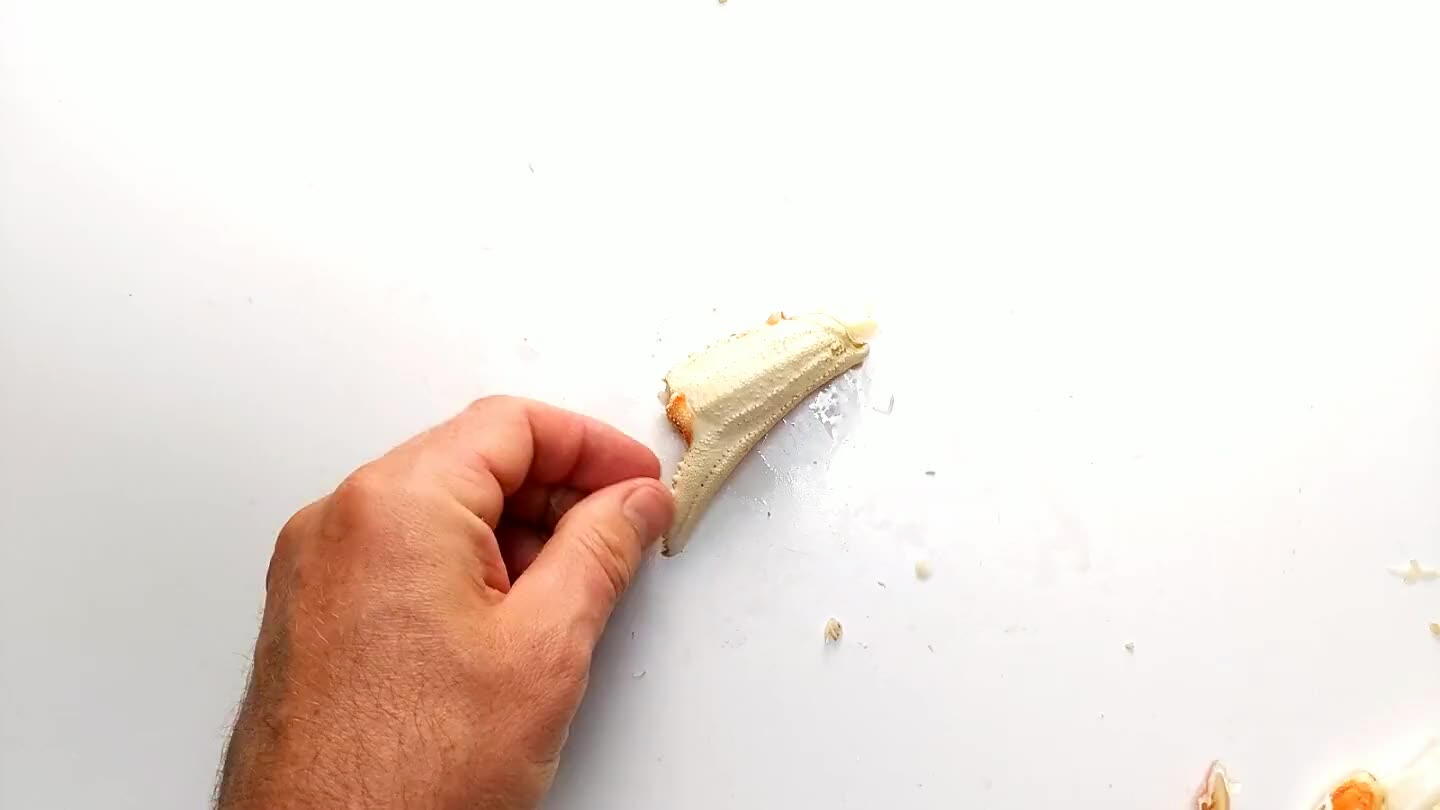
The claws are often the hardest part of the crab. Place the claw on a flat, firm surface, with the natural arch of the claw upward. leaving a gap between the claw shell and the table. Then give it a swift whack from the top with the butt of your palm. One good crack is all you need. Pick out the meat and add it to your pile.
16

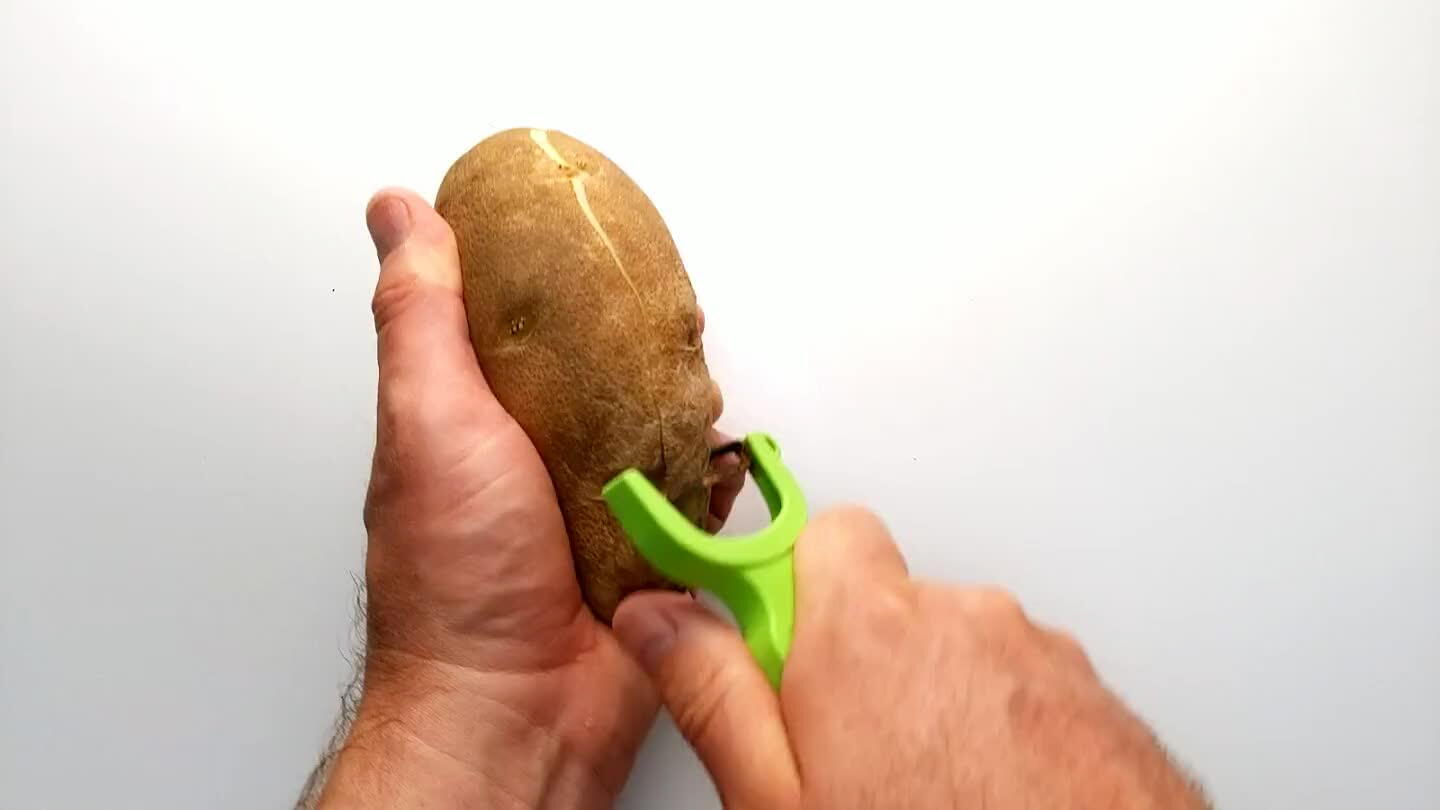
Peel the potato and grate it on a box grater. Use the standard cheese setting.
17

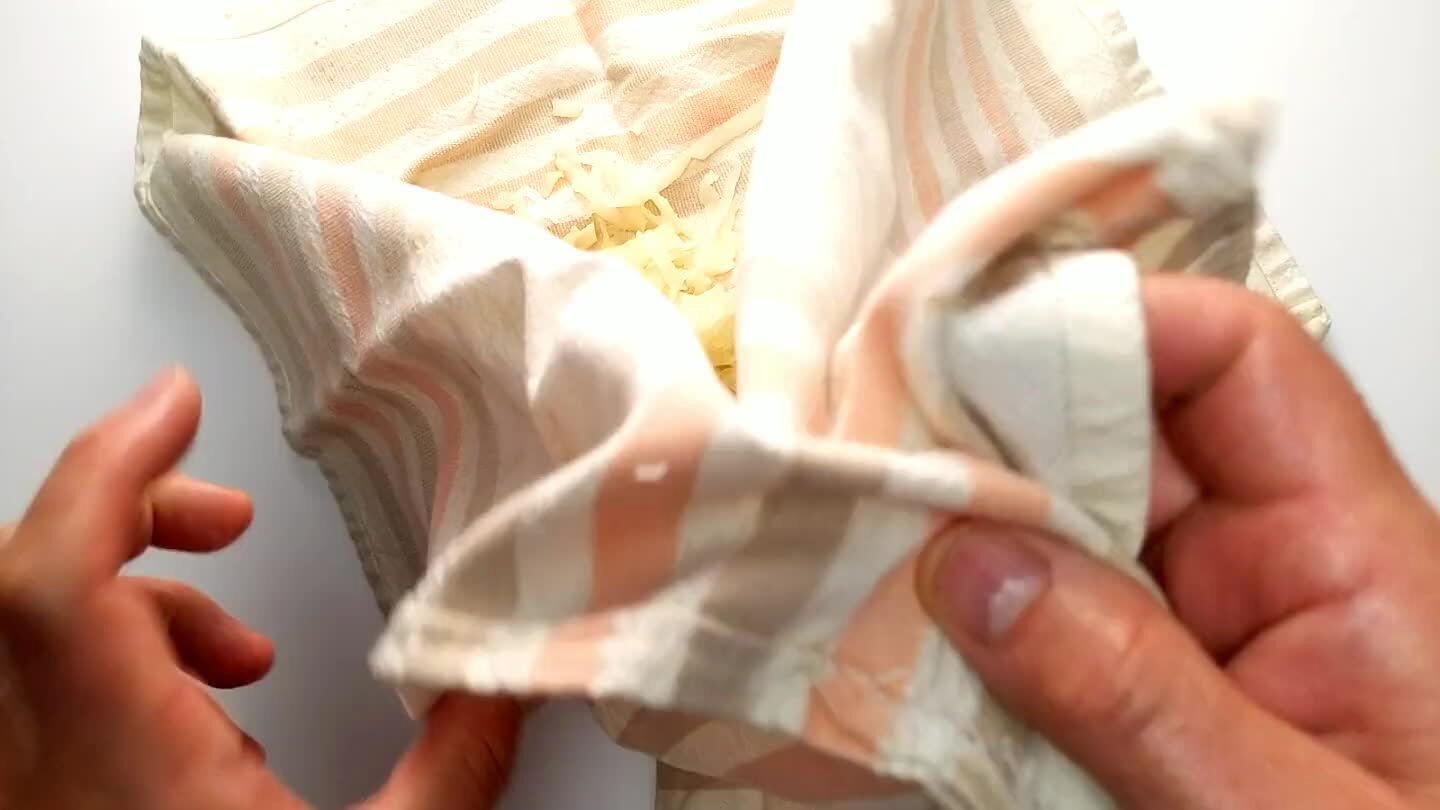
Using a clean kitchen towel, wrap up the grated potato and twist firmly to squeeze off as much liquid as possible.
18

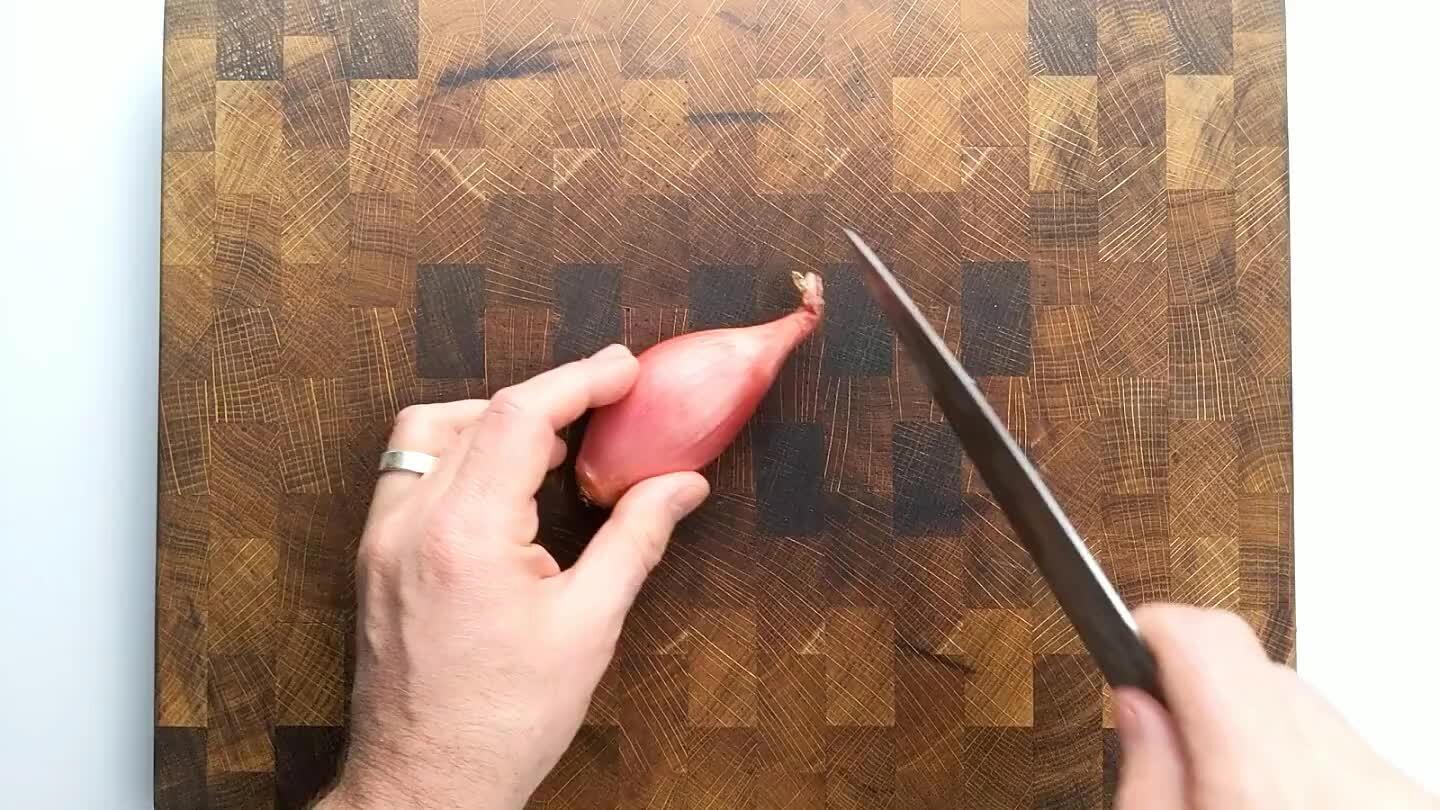
Slice off the stem end of the shallot, then slice it in half through the middle of the cut face towards the root end. Place the halves on the newly cut side and slice from above. For a very fine mince, slice with the knife parallel to the board, towards the root tip, several times, without breaking through the root end. Finally, turn the shallot and cut to a fine dice.
19

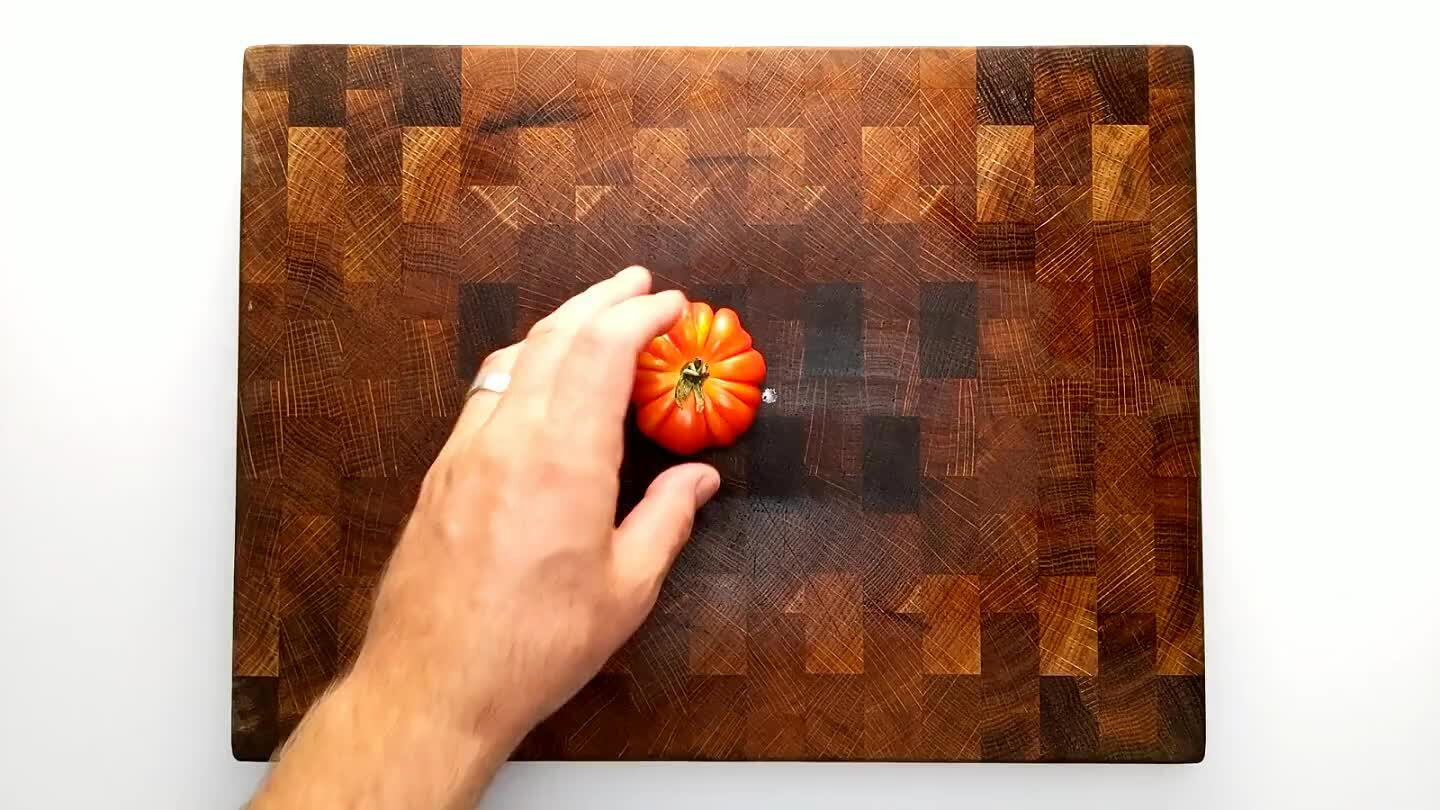
Wash the tomatoes and slice into wedges, removing and discarding the stem. Group the wedges into a bundle and dice into small chunks.
20

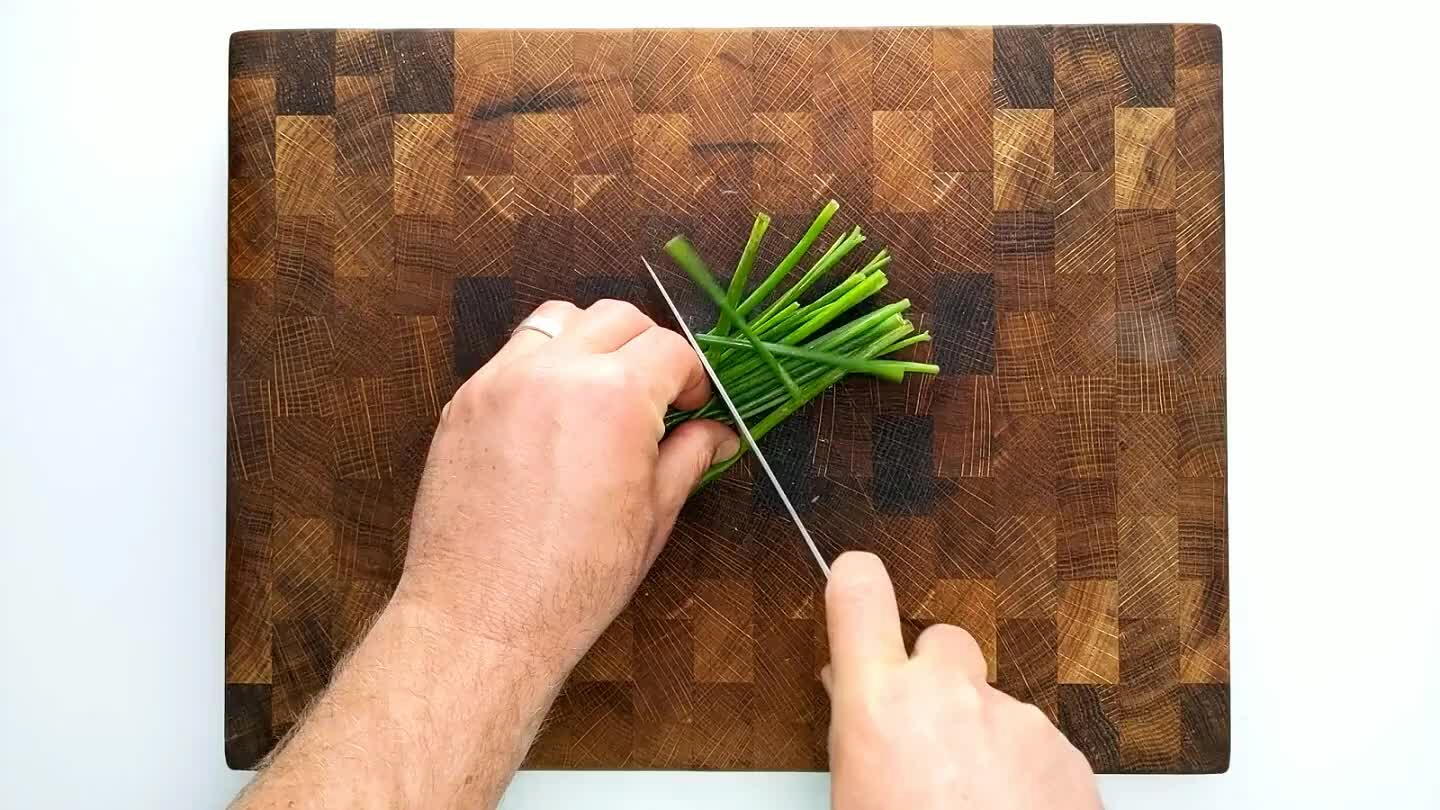
Bundle up the chives, get rid of any ugly ones, and slice them thin.
21


Place the picked crab in a medium-sized mixing bowl.
22

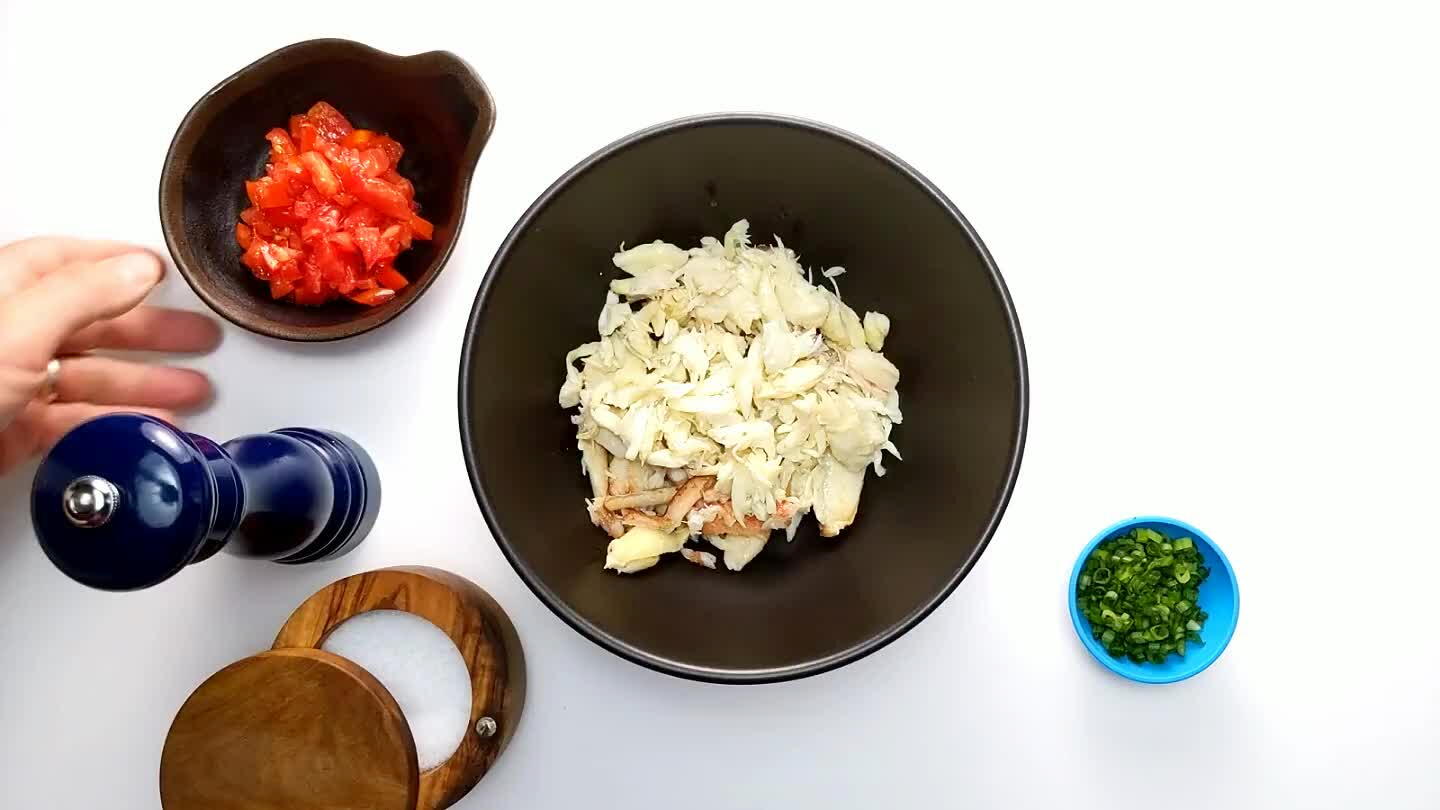
Add the diced tomato.
23

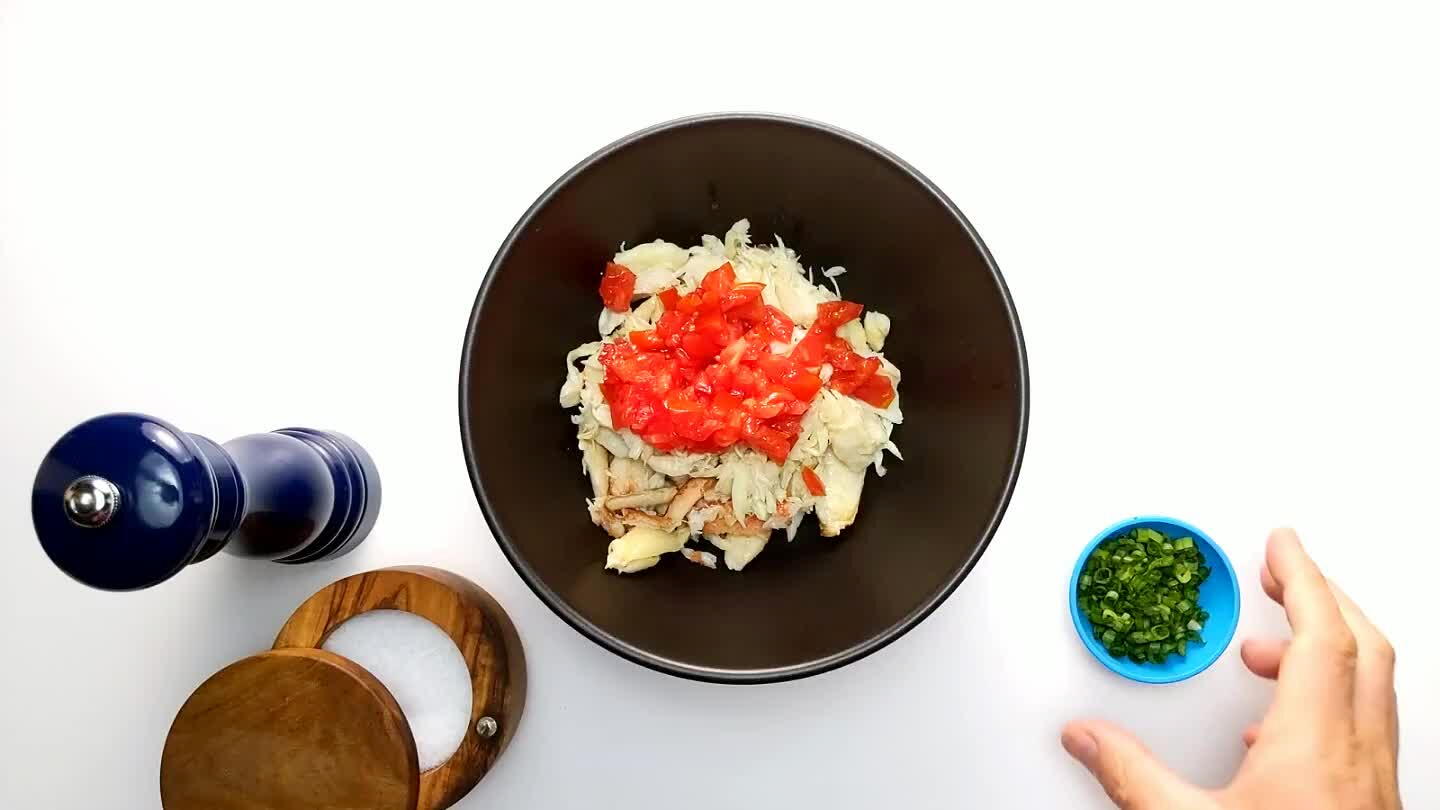
Add the sliced chives.
24

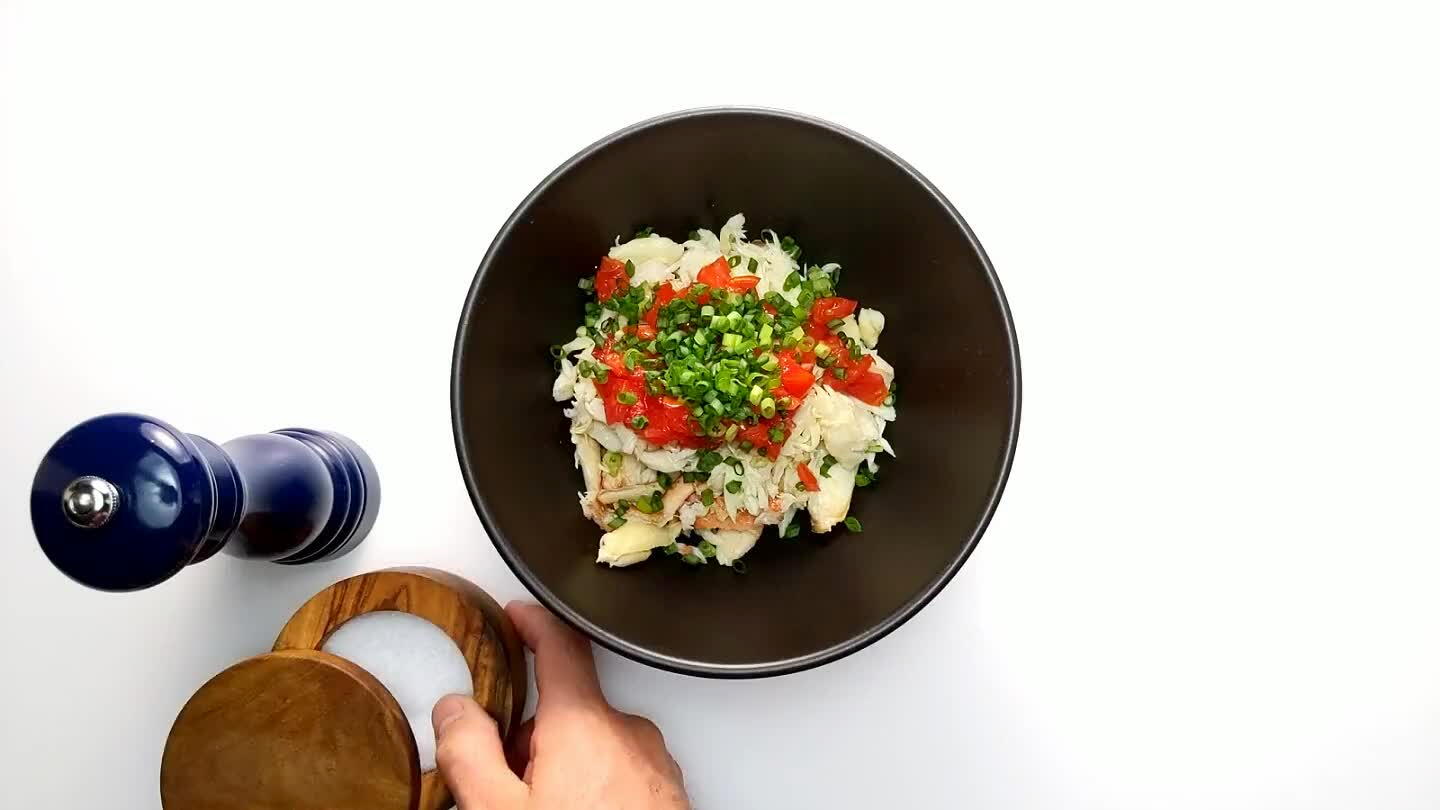
Season lightly with salt and fresh cracked pepper. A little lemon juice is also a great idea if you have some available.
25

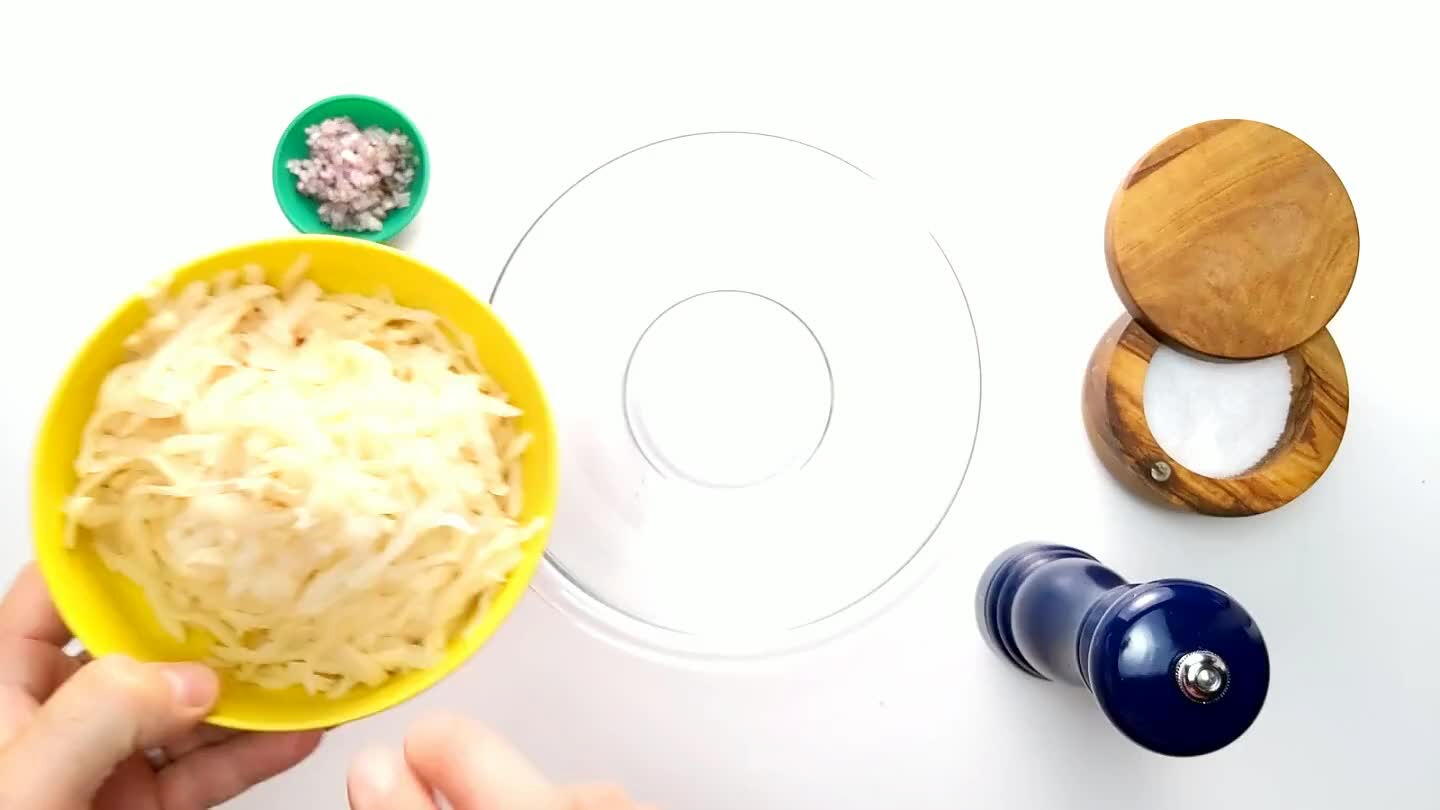
In a separate bowl, mix up the latkes, starting with the grated potato.
26


Add the minced shallot.
27


Add a little salt and pepper.
28

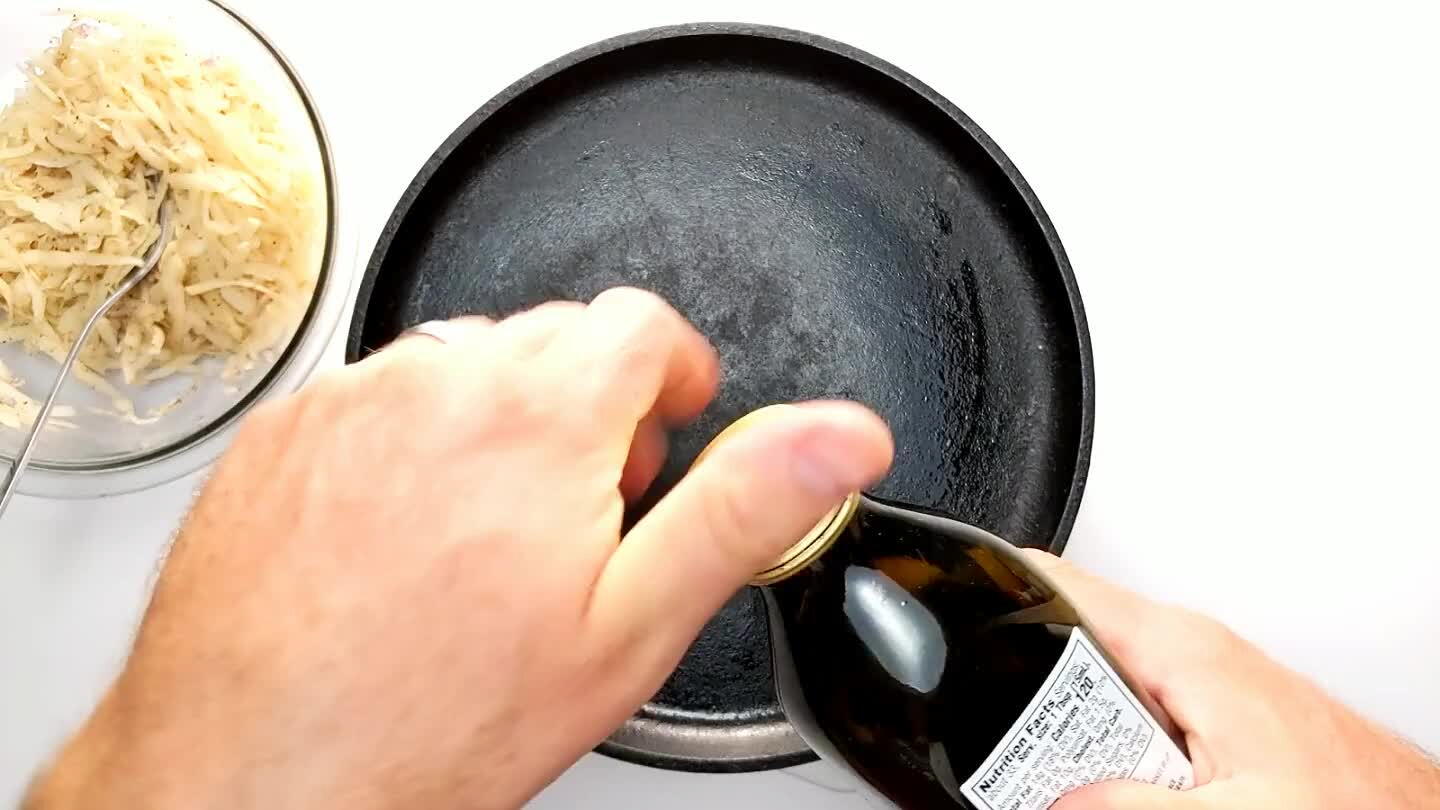
Warm some oil in a heavy skillet over medium heat.
29


When the oil is hot, use a fork to drop out little haystacks of grated potato onto the skillet. Let the piles cook to a golden crisp on the bottom, then flip them and cook the opposite side. Transfer to paper towels to drain.
30

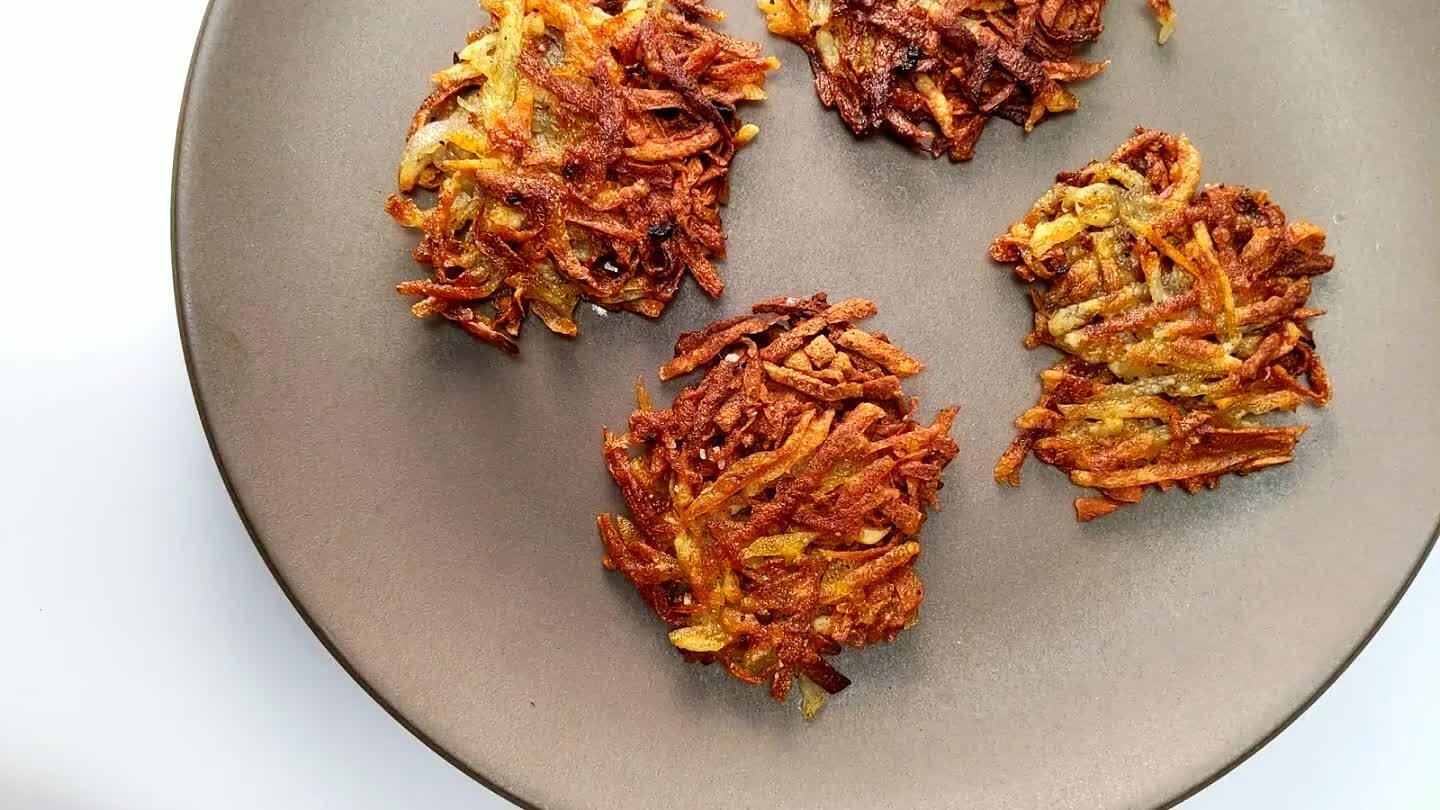
Top each potato crisp with a little pile of crab salad.
31

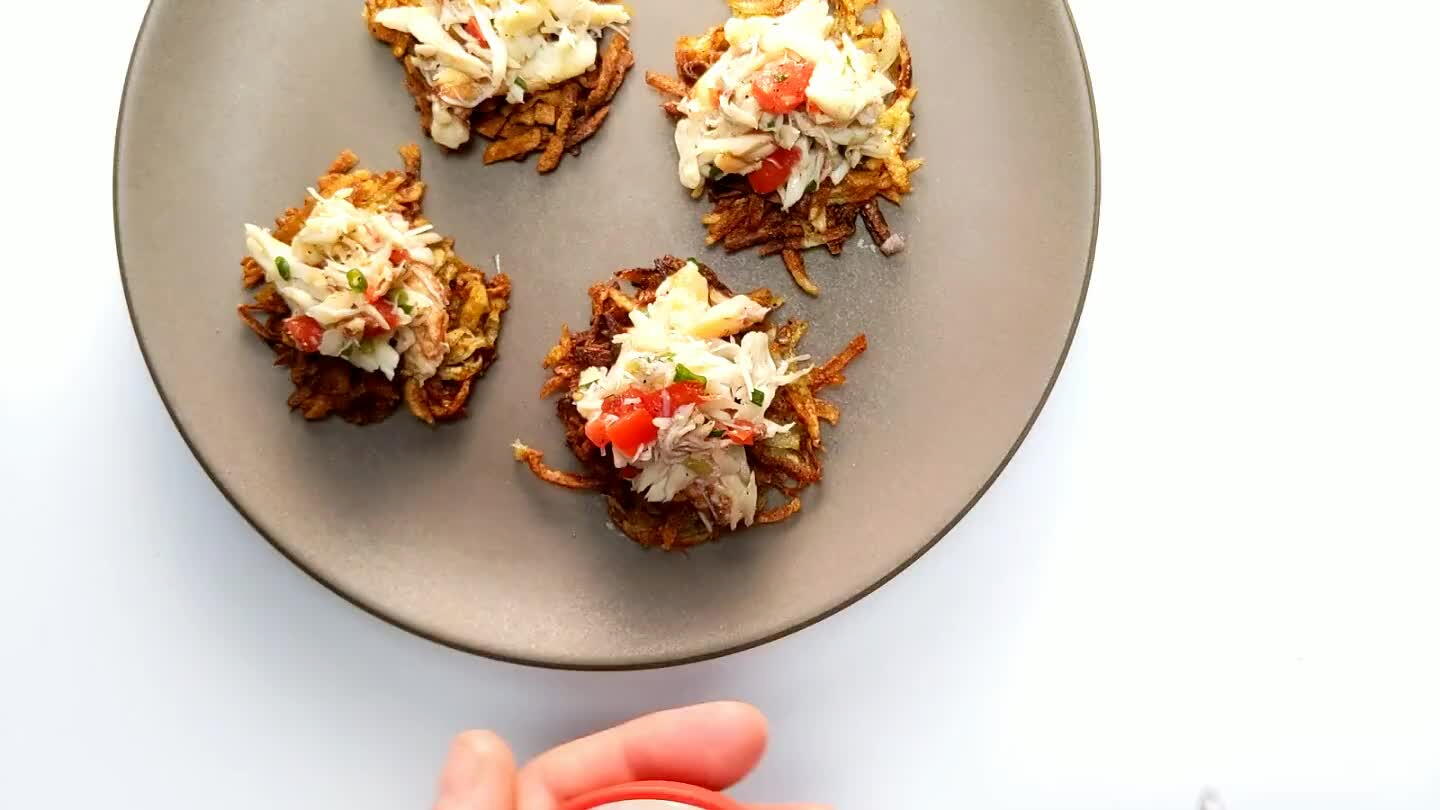
Garnish with dollops of plain greek yogurt.
32

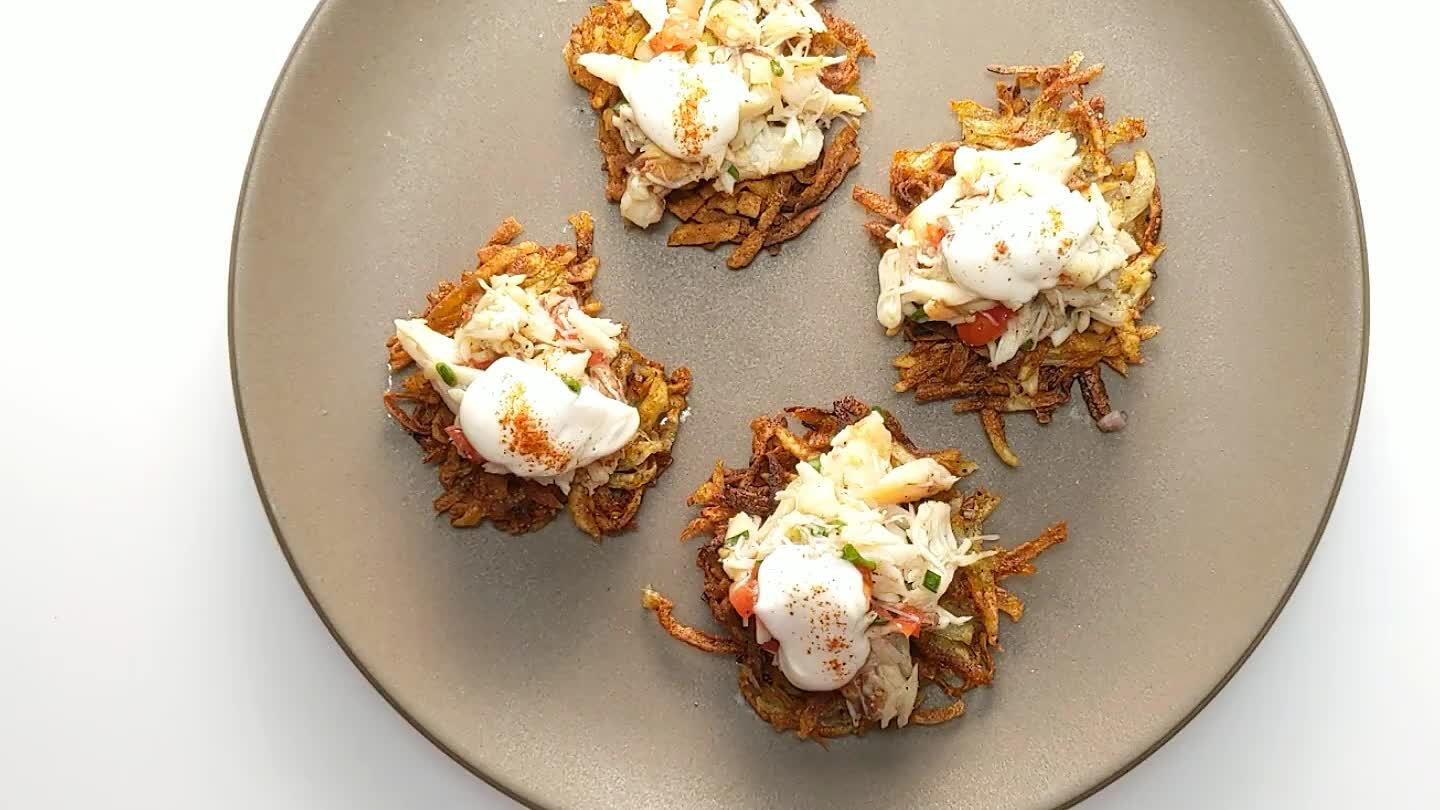

Comments